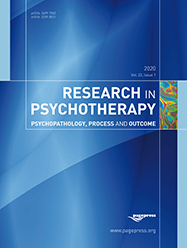Characteristics of effective online interventions: implications for adolescents with personality disorder during a global pandemic

All claims expressed in this article are solely those of the authors and do not necessarily represent those of their affiliated organizations, or those of the publisher, the editors and the reviewers. Any product that may be evaluated in this article or claim that may be made by its manufacturer is not guaranteed or endorsed by the publisher.
Authors
In recent years, the necessity of providing online interventions for adolescents, as an alternative to face-to-face interventions, has become apparent due to several barriers some adolescents face in accessing treatment. This need has become more critical with the coronavirus disease 2019 (COVID-19) global pandemic impacting the delivery of psychotherapy and limiting accessibility of face-to-face therapy. Whilst it has been established that face-to-face psychotherapy for adolescents with personality disorder can be effective in reducing the impact these complex mental illnesses have on functioning, online interventions for adolescents are rare, and to our knowledge there are no empirically validated online interventions for personality disorder. The development of novel online interventions are therefore necessary. To inform the development of online interventions for adolescents with personality disorder or symptoms of emerging personality disorder, a two-phase rapid review was conducted. Phase one consisted of a search and examination of existing online mental health programs for adolescents with symptoms of personality disorder, to understand how to best use online platforms. Phase two consisted of a rapid review of empirical literature examining online interventions for adolescents experiencing symptoms of personality disorder to identify characteristics that promote efficacy. There were no online programs specific to personality disorder in adolescence. However, 32 online mental health programs and 41 published empirical studies were included for analysis. Common intervention characteristics included timeframes of one to two months, regular confidential therapist contact, simple interactive online components and modules, and the inclusion of homework or workbook activities to practice new skills. There is an urgent need for online interventions targeting personality dysfunction in adolescence. Several characteristics of effective online interventions for adolescents were identified. These characteristics can help inform the development and implementation of novel online treatments to prevent and reduce the burden and impact of personality disorder, or symptoms of emerging personality disorder, in adolescents. This has implications for the COVID-19 pandemic when access to effective online interventions has become more urgent.
How to Cite

This work is licensed under a Creative Commons Attribution-NonCommercial 4.0 International License.






